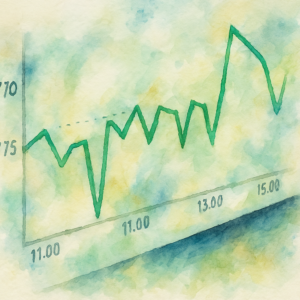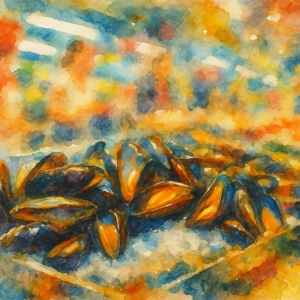Improve your French listening skills with this clip of French in real life. It’s the last clip of this episode of the Transfert podcast. Set your level and fill in the blanks with what you hear.
Take the quiz, join the conversation.
Did you find this one challenging or easy? Did you hear something diffferent? What surprised you? What levels did you complete? Comment below and share what’s opening up for you with this quiz.
Learn French with a podcast snippet! This clip is is from Transfert s01ep22. We do not own the content. Listen to the entire episode here.
The above audio sample and transcription is from Transfert s01ep22. We do not own the content. Listen to the entire episode here.
see you very soon !
What’s opening up for you with this clip?
The snippet in English
Find a translation of this snippet here, how much of this did you hear?
J’ai réalisé cet épisode avec Alexandre Mognol, Pauline Thomson à la musique, Jean-Baptiste Aubonnet au mixage. On attend toujours vos commentaires sur Facebook, sur iTunes et en attendant le prochain transfert, tâchez de rire comme Gwen. Ha ha ha ha ! À très vite !
I produced this episode with Alexandre Mognol, Pauline Thomson on music and Jean-Baptiste Aubonnet on mixing. We’re still waiting for your comments on Facebook, on iTunes, and while we’re waiting for the next transfer, try to laugh like Gwen. Ha ha ha ha! See you soon!
The above translation from Deepl
What does “j’ai réalisé” mean?
In the context of “J’ai réalisé cet épisode,” the phrase “J’ai réalisé” translates to “I produced” or “I directed” in English. Here, it refers to the speaker’s role in creating or overseeing the production of a particular episode, likely of a podcast, radio show, TV series, or similar content.
Usage and Context:
- Media Production: Indicates the speaker’s involvement in the creative and technical aspects of producing an episode.
- Role Clarification: Used to specify the speaker’s role as a producer or director, responsible for the content, direction, or overall management of the episode’s production.
- Common in Broadcasting and Film: This usage is typical in contexts related to broadcasting, film, television, or online content creation.
Grammatical Structure:
- “J’ai”: The first person singular form of “avoir” in the perfect tense, meaning “I have.”
- “Réalisé”: The past participle of “réaliser,” which means “to produce” or “to direct” in this context.
Cultural Notes:
- In French media terminology, “réaliser” is often used to refer to the production or direction of creative content. It encompasses a range of responsibilities from conceptualizing to bringing the project to completion.
In Summary:
“J’ai réalisé cet épisode” means “I produced/directed this episode” in French. It is used in the context of media and content creation to indicate the speaker’s role in overseeing and crafting an episode of a show, podcast, or similar project. The phrase highlights the speaker’s creative and managerial involvement in the production process.
What does “on attend toujours” mean?
The phrase “on attend toujours” in French translates to “we are still waiting” or “one is still waiting” in English. It is used to indicate that the speaker and possibly others are continuing to wait for something or someone.
Usage and Context:
- Continued Waiting: Implies that the waiting has been going on for some time and is still ongoing.
- Example: “On attend toujours le début du spectacle.” (We are still waiting for the show to start.)
- Expressing Impatience or Anticipation: Can convey a sense of impatience, expectation, or anticipation about the awaited event or person.
- Example: “On attend toujours ta réponse.” (We are still waiting for your response.)
Grammatical Structure:
- “On”: A versatile pronoun in French that can mean “we,” “one,” “people,” or “someone,” depending on the context.
- “Attend”: Present tense form of “attendre,” meaning “to wait.”
- “Toujours”: Means “still” or “always,” emphasizing the continuity of the action.
Cultural Notes:
- In French, using “on” as a subject is a common and informal way to refer to a group, including the speaker. “On attend toujours” reflects this usage and is a typical way to express ongoing actions or situations.
In Summary:
“On attend toujours” means “we are still waiting” or “one is still waiting” in French. It indicates that the waiting process is ongoing and can convey feelings of anticipation or impatience. The phrase is commonly used in everyday French to express the continuity of waiting for something or someone.
What does “tâchez de rire” mean?
The phrase “tâchez de rire” in French translates to “try to laugh” or “endeavor to laugh” in English. It’s an imperative expression advising or encouraging someone to make an effort to laugh.
Usage and Context:
- Encouraging Positivity: Often used to encourage someone to find humor or joy in a situation, possibly to lighten the mood or to cope with difficult circumstances.
- Example: “Dans les moments difficiles, tâchez de rire.” (In difficult times, try to laugh.)
- Therapeutic or Philosophical Context: Can be used in a therapeutic or philosophical sense, emphasizing laughter as a coping mechanism or as a way to improve one’s outlook.
Grammatical Structure:
- “Tâchez”: Comes from the verb “tâcher,” meaning “to try” or “to endeavor.” It’s in the imperative form, making it a command or suggestion.
- “De rire”: “To laugh,” indicating the action that one is being encouraged to try or endeavor to do.
Cultural Notes:
- In French culture, as in many others, the idea of trying to find laughter or joy in challenging situations is often seen as a positive approach to life. “Tâchez de rire” reflects this perspective, encouraging an active effort to seek lightness and humor.
In Summary:
“Tâchez de rire” translates to “try to laugh” in French and is used as an imperative expression to encourage someone to make an effort to find humor or joy, often in challenging situations. It emphasizes laughter as a beneficial action, promoting a positive mindset or approach to difficulties. The phrase is a reflection of the value placed on humor and positivity in navigating life’s challenges.
What does “À très vite !” mean?
The phrase “À très vite !” in French translates to “See you very soon!” in English. It is an informal and friendly expression used to say goodbye, indicating that the speaker expects or hopes to see the other person again in the near future.
Usage and Context:
- Informal Farewell: Commonly used among friends, family, or colleagues in casual situations.
- Conveys Anticipation: Expresses a positive anticipation of the next meeting being in the near future.
- Optimistic Tone: Carries a cheerful and optimistic tone, reflecting a desire for a quick reunion.
Grammatical Structure:
- “À”: Preposition typically used in French in farewell phrases, meaning “until.”
- “Très vite”: Literally translates to “very quickly,” implying that the next meeting will happen soon.
Cultural Notes:
- In French-speaking cultures, farewell expressions like “À très vite !” reflect the importance of social connections and the anticipation of future interactions. The phrase is emblematic of the friendly and warm nature of informal goodbyes.
In Summary:
“À très vite !” is a commonly used French phrase for “See you very soon!” It’s an informal and friendly way of saying goodbye, implying an eagerness and positive expectation for a quick subsequent meeting. The phrase is typical in casual conversations among acquaintances, friends, or family.
This clip is from the “Transfert” podcast
Produced by slate.fr, “Transfert” is a unique French podcast that offers an immersive listening experience. Each episode features real-life stories narrated by the people who lived them. These personal narratives cover a wide range of human experiences and emotions, providing listeners with profound insights into the lives and minds of others. The storytelling is intimate and engaging, making it an excellent resource for French language learners to improve their listening skills while connecting with compelling, authentic content.
Improving your French Listening Comprehension with Podcasts
On this site, fast spoken French is finally accessible to all levels. The tool break podcasts into short clips each set to transcription fill-in-the-blank practice. My favorite practice in class is always dictées. While they can seem overwhelming at first, the confidence boost and skills payoff for doing the work pays off. They’re perfect for anyone at any level, from advanced students to those just starting.
We use podcasts and our practice exercises to make it possible for anyone, anywhere to immerse in French with fun and ease. Join us and enjoy French, one short clip at a time. Let’s learn together!
Make the most of the site:
- Daily Podcast Listening: Start your day with a French podcast from our collection. Choose episodes that align with your interests to keep it engaging.
- Active Listening Practice: As you listen, try to pick out key phrases and vocabulary. Use our daily quizzes to test your understanding and reinforce learning.
- Repeat and Shadow: Listen to the same podcast segment multiple times. Try to mimic the pronunciation and intonation to improve your spoken French.
- Note-taking: Jot down new words or phrases you encounter. Review these notes regularly to enhance vocabulary retention.
- Reflect and Respond: After each episode, summarize the main points in French, either in writing or aloud. This helps in consolidating your learning and improving your expressive skills.
- Read More:
- True Beginner or A1 Learners: discover tips learning with podcasts at an introductory level.
- Discover all the podcast clips on FrenchIRL organized by level.
- Top Tips: Here’s how I make the most of my own site.
I created the French In Real Life project because I wanted to understand more than just my teacher and youtubers who cater to learners. I wanted to understand the French I hear in France. I hope you can benefit as much as I have. Become a supporting member for access to all clips.
Improve your French listening skills with this clip of French in real life. It’s the last clip of this episode of the Transfert podcast. Set your level and fill in the blanks with what you hear.
Take the quiz, join the conversation.
Did you find this one challenging or easy? Did you hear something diffferent? What surprised you? What levels did you complete? Comment below and share what’s opening up for you with this quiz.








